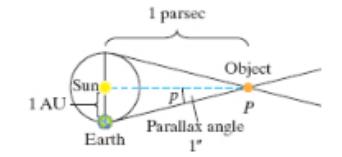Problem 1RE: For Exercises 1-4, solve the right triangle for the unknown sides and angles. Round values to 1... Problem 2RE Problem 3RE: For Exercises 1-4, solve the right triangle for the unknown sides and angles. Round values to 1... Problem 4RE: For Exercises 1-4, solve the right triangle for the unknown sides and angles. Round values to 1... Problem 5RE: A 20-ft-tall light post casts a 25-ft shadow along level ground. What is the angle of elevation of... Problem 6RE: A passenger lift runs 680ft up the side of a mountain from the base to an exit station If the change... Problem 7RE: A 75-ft guy wire is attached to the top of a tower. If the guy wire makes an angle of 38.2 with the... Problem 8RE: A 125-ft kite string is anchored to the ground. If the string makes an angle of 49 with the ground,... Problem 9RE Problem 10RE Problem 11RE: A plane flies due west for 2hr then due south for 1hr at an average speed of 375mph . To the nearest... Problem 12RE: A boat travels 3mi east then 7mi south. To the nearest tenth of a degree, what is the bearing from... Problem 13RE: A ship leaves a dock on a bearing of S48.2W . After traveling for 1.6hr at 28mph , how far south and... Problem 14RE: A plane flying 275mph on a bearing of N73.5W travels for 4hr . How far north and west has the plane... Problem 15RE: For Exercises 15-20, solve ABC subject to the given conditions. Round the lengths of sides and... Problem 16RE Problem 17RE: For Exercises 15-20, solve ABC subject to the given conditions. Round the lengths of sides and... Problem 18RE Problem 19RE Problem 20RE Problem 21RE: For Exercises 21-22, find the area of a triangle with the given measurements. Round to 1 decimal... Problem 22RE Problem 23RE: Points on a straight shoreline, A and B , are separated by 700yd . Observers at each point record... Problem 24RE: Two landing points, A and B , lie on the straight bank of a river and are separated by 45ft . Find... Problem 25RE: A ranger station at a point R in a wilderness area is located 5.6mi from a campground at point C... Problem 26RE: Standing on top of a 30-ft lifeguard tower, an observer measures the angle of elevation of a... Problem 27RE: PointsA,B, and P are collinear points along a hillside.A blimp located at point Q is directly... Problem 28RE: A surveyor fixes a baseline of 64 ft between two points A and B on a plot of land. a. Write an... Problem 29RE: For Exercises 29-32, solve ABC subject to the given conditions if possible. Round the lengths of the... Problem 30RE Problem 31RE: For Exercises 29-32, solve ABC subject to the given conditions if possible. Round the lengths of the... Problem 32RE Problem 33RE: For Exercises 33-34, find the measures of the angles within the triangle formed by the given points.... Problem 34RE Problem 35RE Problem 36RE: In Exercises 35-36, find the area of the triangle with sides of the given lengths. Round to the... Problem 37RE: Two straight jogging paths begin at a kiosk in a park, and the angle between the paths is 73 . Two... Problem 38RE: Given points A6,2 and B1,4 on the coordinate plane, find the measure of angleAOB , where point O is... Problem 39RE Problem 40RE: Two planes take off from an airport at the same time. The first plane averages 480mph and flies on a... Problem 41RE: Two sides of a triangular plot of land measure 510ft and 237ft and the angle between them is 78.1 a.... Problem 42RE Problem 43RE: For Exercises 43-46, suppose that an object moves in simple harmonic motion with displacement d (in... Problem 44RE Problem 45RE: For Exercises 43-46, suppose that an object moves in simple harmonic motion with displacement d (in... Problem 46RE Problem 47RE Problem 48RE: For Exercises 47-48, a block is attached to a horizontal spring. At time t=0 , if the block is... Problem 49RE: The angular displacement (in radians) for a simple pendulum is given by =0.175sint . a. Determine... Problem 50RE: A Ferris wheel is 200ft in diameter with its lowest point 3ft off the ground. Once all the... Problem 51RE: For Exercises 51-52, use a graphing utility to graph the function and bounding curves for t0 .... Problem 52RE: For Exercises 51-52, use a graphing utility to graph the function and bounding curves for t0 .... Problem 1T: For Exercises 1-8, solve ABC subject to the given conditions. Round the lengths of sides and... Problem 2T: For Exercises 1-8, solve ABC subject to the given conditions. Round the lengths of sides and... Problem 3T: For Exercises 1-8, solve ABC subject to the given conditions. Round the lengths of sides and... Problem 4T: For Exercises 1-8, solve ABC subject to the given conditions. Round the lengths of sides and... Problem 5T Problem 6T Problem 7T: For Exercises 1-8, solve ABC subject to the given conditions. Round the lengths of sides and... Problem 8T Problem 9T Problem 10T Problem 11T: For Exercises 9-12, find the area of ABC with the given measurements. Round to 1 decimal place.... Problem 12T Problem 13T: A ship travels west at 25 knots. At 7:30P.M. , the captain sees a floating become due south of the... Problem 14T: Over the course of a day, as the angle of inclination of the Sun decreases from 64 to 49 , the... Problem 15T: To determine the height of a tower, a surveyor notes that the angle of elevation to the top of the... Problem 16T: In addition to the light-year to quantify large distances in outer space, astronomers often use two... Problem 17T: A triangular shade sail has sides of length 123 and 156 , and the angle between them is7318 . a. If... Problem 18T: The distance between Los Angeles, California, and Salt Lake City, Utah, on a map is 9.5in . The... Problem 19T: The connector rod from the piston to the crankshaft in a certain engine is 8.5in . The radius of the... Problem 20T Problem 21T Problem 22T: The displacement of an object attached to a spring that moves in simple harmonic motion is given by... Problem 23T Problem 24T: A block hangs on a spring attached to the ceiling and is pulled down 8 in. below its equilibrium... Problem 25T: The angular displacement (in radians) for a simple pendulum is given by.=0.14sin2t . a. Determine... Problem 26T Problem 27T: Use a graphing utility to graph the function d=4e0.25esin1.3t and bounding curves for t0 . Problem 1CRE: Write the equation of the line in slope-intercept form that passes through the point 3,12 with slope... Problem 2CRE Problem 3CRE Problem 4CRE: Write a polynomial fx of degree 5 , with integer coefficients, and with zeros 2 (multiplicity 2 ), 6... Problem 5CRE: Write equations for the asymptotes for the graph of fx=2x2+5x3x8 Problem 6CRE: Write equations for the asymptotes for the graph of fxsec2x on the interval 2,2 Problem 7CRE Problem 8CRE Problem 9CRE: Write an equation for a tangent function with a period of 13 and a phase shift of 43 . Problem 10CRE: A motorist drives on a toll road to and from work each day and pays 4.25 in tolls one-way. a. Write... Problem 11CRE: a. Write a variation model using k as the constant of variation if Z is directly proportional to the... Problem 12CRE: a. Write an equation representing the fact that the product of two consecutive odd integers is 323 .... Problem 13CRE Problem 14CRE: The cost to buy tickets to a concert is $50 per ticket. a. Write a function that represents the cost... Problem 15CRE: Suppose that the population of a country in the year 2000 was 19.0 million and grew to 22.6 million... Problem 16CRE Problem 17CRE Problem 18CRE: Find the exact value of cos200cos50+sin200sin50 Problem 19CRE Problem 20CRE: For Exercises 19-20, solve ABC subject to the given conditions. Round the lengths of sides and... format_list_bulleted



 Elementary Geometry For College Students, 7eGeometryISBN:9781337614085Author:Alexander, Daniel C.; Koeberlein, Geralyn M.Publisher:Cengage,
Elementary Geometry For College Students, 7eGeometryISBN:9781337614085Author:Alexander, Daniel C.; Koeberlein, Geralyn M.Publisher:Cengage, Mathematics For Machine TechnologyAdvanced MathISBN:9781337798310Author:Peterson, John.Publisher:Cengage Learning,
Mathematics For Machine TechnologyAdvanced MathISBN:9781337798310Author:Peterson, John.Publisher:Cengage Learning, Glencoe Algebra 1, Student Edition, 9780079039897...AlgebraISBN:9780079039897Author:CarterPublisher:McGraw Hill
Glencoe Algebra 1, Student Edition, 9780079039897...AlgebraISBN:9780079039897Author:CarterPublisher:McGraw Hill Holt Mcdougal Larson Pre-algebra: Student Edition...AlgebraISBN:9780547587776Author:HOLT MCDOUGALPublisher:HOLT MCDOUGAL
Holt Mcdougal Larson Pre-algebra: Student Edition...AlgebraISBN:9780547587776Author:HOLT MCDOUGALPublisher:HOLT MCDOUGAL Trigonometry (MindTap Course List)TrigonometryISBN:9781337278461Author:Ron LarsonPublisher:Cengage Learning
Trigonometry (MindTap Course List)TrigonometryISBN:9781337278461Author:Ron LarsonPublisher:Cengage Learning Elementary Geometry for College StudentsGeometryISBN:9781285195698Author:Daniel C. Alexander, Geralyn M. KoeberleinPublisher:Cengage Learning
Elementary Geometry for College StudentsGeometryISBN:9781285195698Author:Daniel C. Alexander, Geralyn M. KoeberleinPublisher:Cengage Learning




